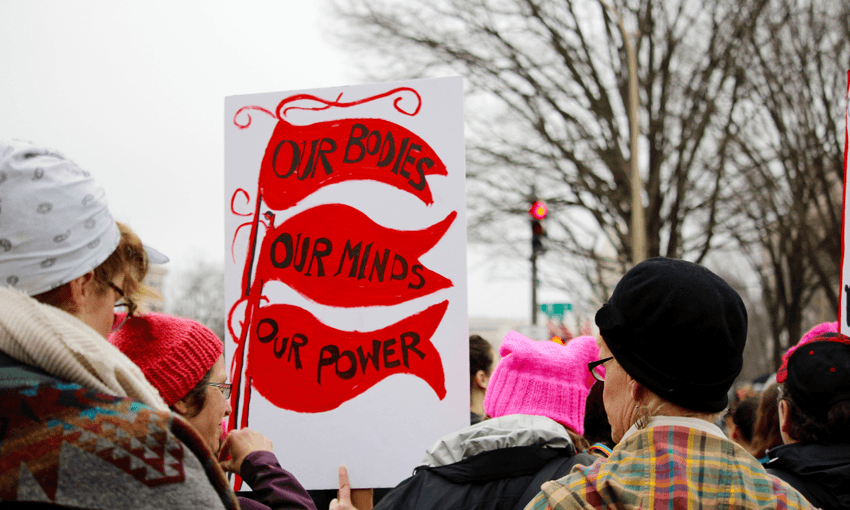Having been part of the fight for reproductive rights as president of ALRANZ Abortion Rights Aotearoa, Terry Bellamak says she’s struck by the similarities between the struggles for abortion rights and assisted dying.
Both prioritise bodily autonomy
Both abortion rights and the right to voluntary assisted dying are founded on the idea that our physical bodies belong to us, and we have the authority to determine what happens to them. Who is anyone else to tell someone they must continue a pregnancy they don’t want, or endure a dying process that has become too painful to bear?
Bodily autonomy is widely recognised as a fundamental human right. It is related to other human rights that are considered absolute, like the right not to be enslaved, or the right not to be tortured. When someone is forced to labour with their body against their will, that is slavery. When someone is subjected to cruel, inhuman, or degrading treatment, that is torture. When those rights are violated, what is stolen from the person on the receiving end is control over their body.
Both honour the sanctity of life by focusing on the experience of life rather than its mere existence. The quality of a life is more important than its length. A pregnant person chooses abortion to secure a quality of life they consider better than the alternative, parenthood. And fair enough – they are the ones best placed to understand their resources, both personal and financial, and what they want out of life in the short and long terms. The inability to properly support a child is a common reason for choosing abortion.
Assisted dying focuses on the quality of life as well. If someone with a terminal illness knows that, should their pain become unbearable, they have a safe, sure means of ending their suffering, then they are freed from the fear of a terrible end. Even if they never use it, just knowing assisted dying is available is of great comfort.
If the pain of a dying body becomes so acute that a terminally ill person is willing to forego the rest of their life to end it, who is anyone else to deny them that compassionate release?
Both respect the freedom of individuals to choose a course of action some people would never dream of choosing for themselves
Both abortion rights and assisted dying involve people in a situation they never wanted to be in. No one intends to acquire an unwanted pregnancy any more than one intends to acquire a terminal illness. Thanks to the recent law change here in Aotearoa, pregnant people are free to choose whether to continue a pregnancy based on their own circumstances priorities and values. In places like El Salvador or Malta, continuing a pregnancy and giving birth is still compulsory.
If the referendum passes, terminally ill people who meet the stringent criteria in the Act will be free to choose whether to continue their lives or end them safely and as painlessly as possible. Right now, they are not free to do so. Those living with palliative care’s rare failures to control their suffering have no recourse but to endure.
Some people say they would never choose abortion or assisted dying. Their freedom to choose not to use either has never been in question. And yet, many of them wish to prevent those who would choose to end their pregnancy or their life from doing so by force of law.
Why do some people want to burden strangers with beliefs they do not share and force them into trouble they want no part of?
Both involve openly choosing a course of action people have been choosing clandestinely and unsafely for a long time. Almost everyone knows what unsafe, illegal abortions were like back in the 19th and 20th centuries, and how they caused terrible injury, suffering, and death.
New Zealand’s ban on assisted dying leaves terminally ill people without any good options. Some resort to killing themselves, risking survival with terrible injuries if they make a mistake. Others receive help from family, who bravely give their loved ones peace while risking prosecution.
A compassionate society does not force people in desperate situations to seek clandestine, DIY solutions that can easily go catastrophically wrong, or require them to intensify their suffering in order to shorten it. A responsible society does not turn a blind eye – it faces the reality that dying people sometimes suffer terribly. They should be able to choose to end their suffering.
These choices were not open to people 50 or 100 years ago. But views of morality have changed over time, and the prevention of preventable suffering is now understood to be the higher good.
Both have opponents that traffic in fear, uncertainty, and doubt
The opponents of abortion and assisted dying have used similar tactics: attempting to sow fear, uncertainty, and doubt. Apparently, there is a common cast of characters among both oppositions.
One of their regular tactics is claiming people are coerced into abortion and assisted dying. It’s a fruitful angle – coercion is reprehensible and indefensible, and they only need to throw out the possibility it might be happening rather than show it is happening.
Strangely, those opponents never mention the coercion people face to stay pregnant or stay alive and suffer. Apparently, some kinds of coercion aren’t so bad.
In the end, the fate of the End of Life Choice referendum will depend on New Zealanders’ willingness to empathise with people they have never met, in whose shoes they have never walked. Please think about them when you vote.
Read more: Everything you need to know about the 2020 assisted dying referendum
